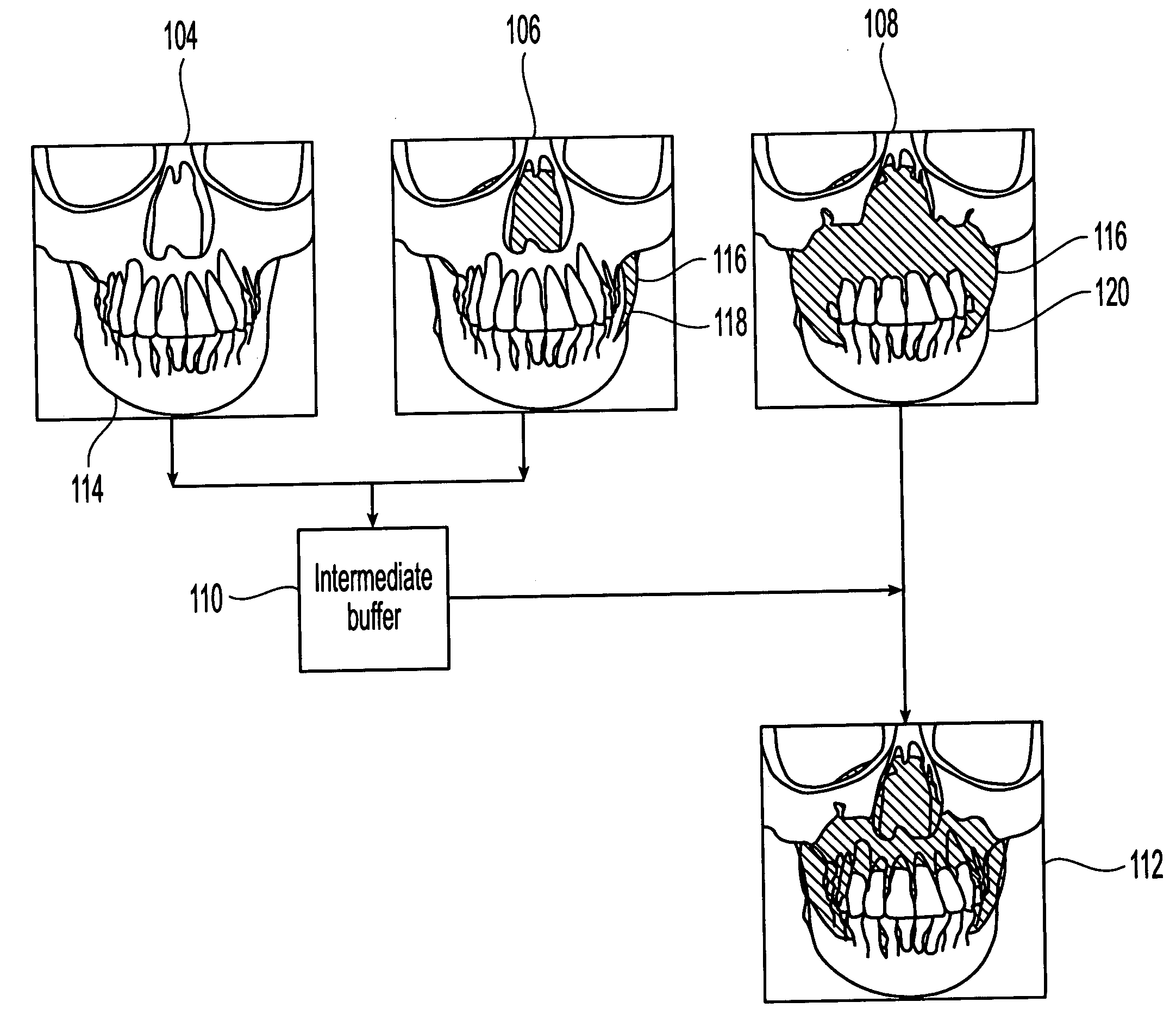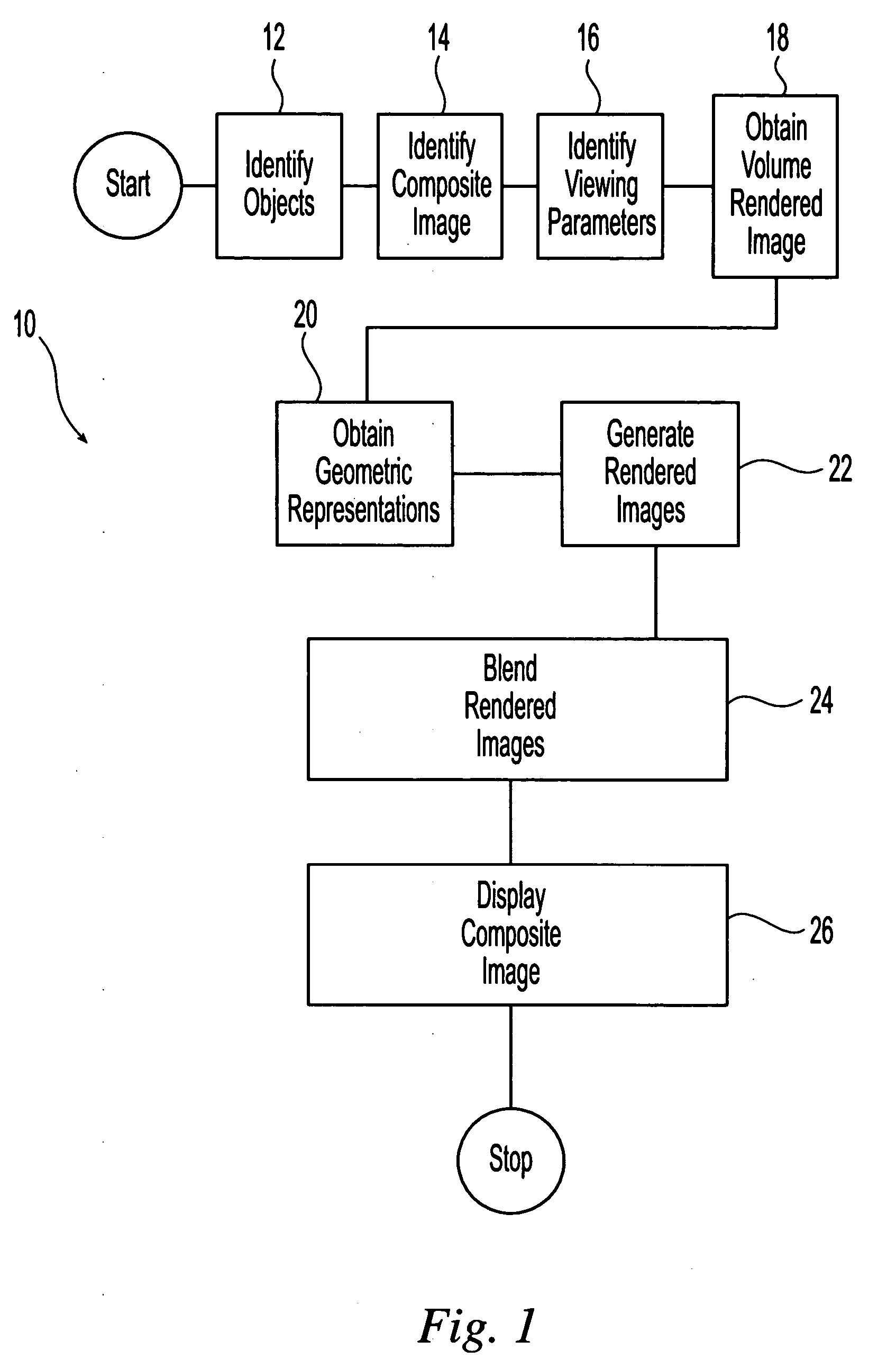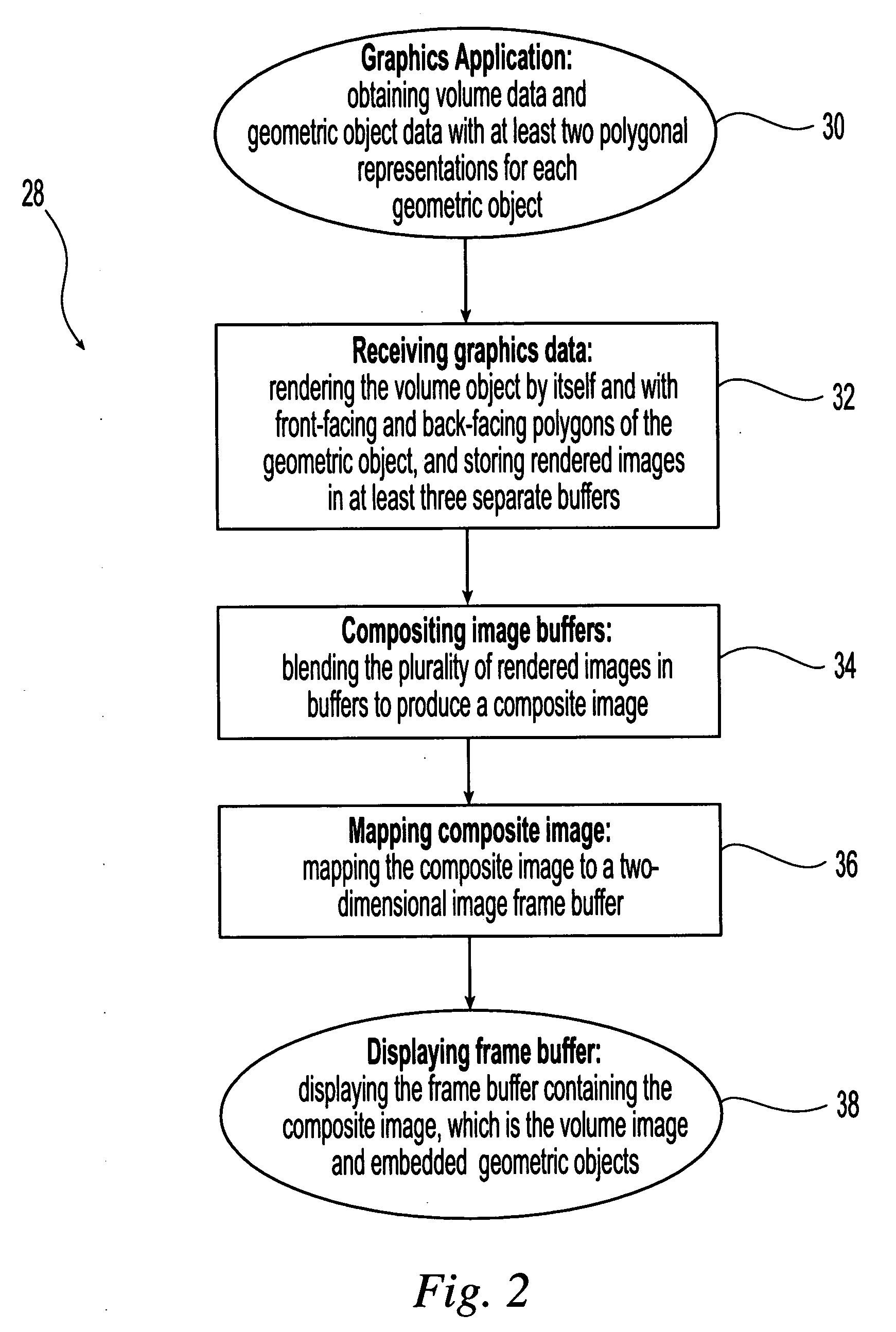Real-time rendering of embedded transparent geometry in volumes on commodity graphics processing units
a graphics processing unit and volume technology, applied in the field of image rendering, can solve the problems of limiting the widespread application of direct volume rendering in particular to applications requiring real-time rendering, and affecting the smoothness of blending
- Summary
- Abstract
- Description
- Claims
- Application Information
AI Technical Summary
Benefits of technology
Problems solved by technology
Method used
Image
Examples
Embodiment Construction
[0020] Referring initially to FIG. 1, the present invention is directed to methods for rendering or creating composite images of two or more objects 10. Initially, the desired composite image is identified by a user. In one embodiment, the user identifies the objects that are to be contained in the composite image 12. Each identified object can be any multidimensional, for example three-dimensional (3D), object or representation. Examples of suitable objects include, but are not limited to, geological formations, meteorological conditions or formations, astronomical formations, physical objects, sports equipment, computer equipment, animals, humans, medical devices and equipment, tactical formations and combinations thereof. The identified objects can possess either an inherent or a user-desired interrelation. Examples of these interrelations include the relationship between a section of human anatomy and a surgical instrument, the geomorphology of an area of the Earth and a mine sh...
PUM
 Login to View More
Login to View More Abstract
Description
Claims
Application Information
 Login to View More
Login to View More - R&D
- Intellectual Property
- Life Sciences
- Materials
- Tech Scout
- Unparalleled Data Quality
- Higher Quality Content
- 60% Fewer Hallucinations
Browse by: Latest US Patents, China's latest patents, Technical Efficacy Thesaurus, Application Domain, Technology Topic, Popular Technical Reports.
© 2025 PatSnap. All rights reserved.Legal|Privacy policy|Modern Slavery Act Transparency Statement|Sitemap|About US| Contact US: help@patsnap.com



